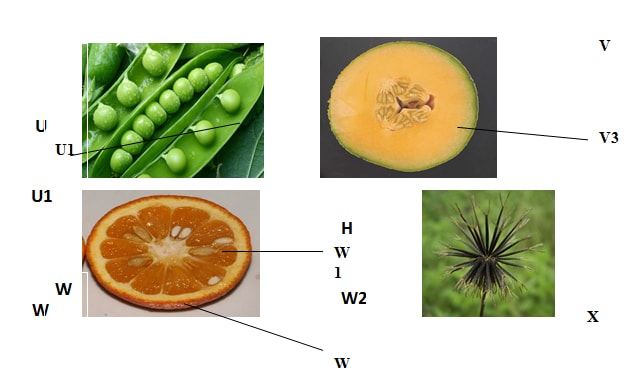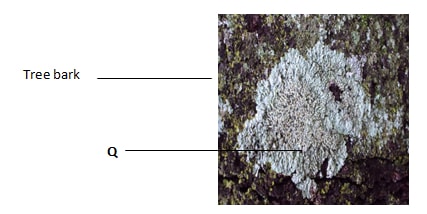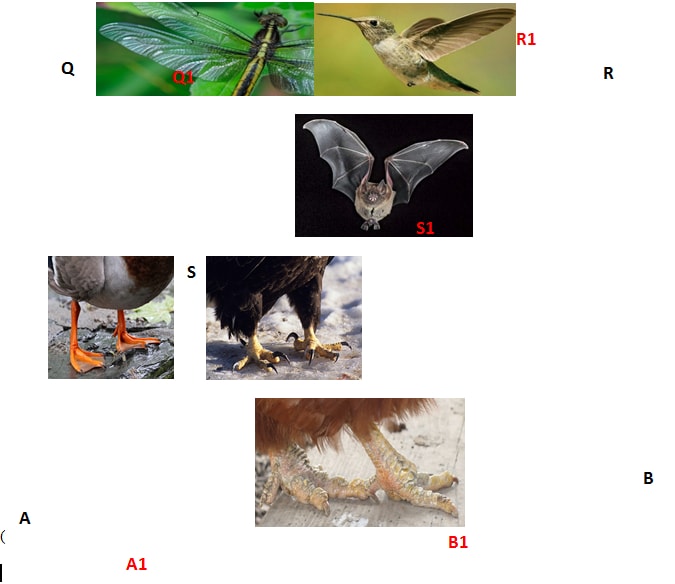- You are provided with the following materials and reagents.
A straight portion of raw pawpaw, labelled D
Two petri dishes, a scalpel/sharp razor blade, two beakers containing liquids A and B
A measuring cylinder, A stop watch/access to a wall clock, Means of labeling- Label the two petri dishes, A and B
- Place 30cm3 of liquid A into petri dish A and 30cm3 of liquid B into petri dish B
- Using the scalpel, prepare four thin, straight flat strips from the raw pawpaw peel
- Each strip should measure about 4cm by 2mm as illustrated below
- Immerse two strips in petri dish A and the other two in petri dish B and leave the set ups undisturbed for 10 minutes.
-
- State your observations in petri dish A and B after 10 minutes
Petri dish A (1mk)
Petri dish B (1mk) - Account for the observations made in (a) (i) above
Petri dish A (2mks)
Petri dish B (2mks)
- State your observations in petri dish A and B after 10 minutes
- Describe the nature of liquids A and B in relation to the sap in the pawpaw peel used in the experiment
Petri dish A (1mk)
Petri dish B (1mk) - With reference to the observations made, compare the nature of the outer and inner surfaces of the pawpaw peel (2mks)
-
- Name the cell structure responsible for the observations made in this experiment (1mk)
- Explain how the cell structure named in (d) (i) above works to bring about the observations made (1mk)
-
- Study the specimens provided then answer the questions below.

- Name the parts labeled U1, W1, W2 and V3 (4mks)
-
- Suggest the mode of dispersal of the specimen labeled U (1mk)
- Give a reason for your answer in b (i) above. (1mk)
-
- suggest the mode of dispersal of the specimen labeled X. (1mk)
- Give a reason for your answer in C (i) above (1mk)
- The Photograph shown below was taken from a damp tree bark. It has organism Q on the surface. Study it then answer the questions.

- Name organism labeled Q…………………………………..……………………….....(1mark)
- Name two organisms that make up Q…………………………..…………………....(2marks)
- Suggest the feeding relationship between the identified organisms in d (i) above explaining the role of each in the relationship. (1mark)
- Identify the two possible Kingdoms represented by organism Q. (2marks)
- Study photographs shown below then answer the questions

- State the type of evolution represented by structures Q1, R1 and S1. (1mark)
- Explain the type of evolution identified in (a) above. (1mark)
- Give the evolution term used to describe structures;
- Q1, R1 and S1. (1mark)
- A1, B1 and C1. (1mark)
- what type of evolution is illustrated by the limbs (A1, B1 and C1)? (1mark)
-
- Name classes for organisms labeled Q, R and S.
- Give two observable reasons for your answer for class S. (2marks)
-
- suggest the diet of animals B and R.
- How is beak of animal B adapted to its function? (2marks)

MARKING SCHEME
-
-
- Petri dish A; Bends to form a ring like strip
Petri dish B; flattens feels flabby - petri dish A; strips placed in hypotonic solution through cortical cells takes water by osmosis , cells become turgid create a bend on strip
Petri dish B;strips placed in hypertonic solution through cortical cells loses water by osmosis cells become flaccid
- Petri dish A; Bends to form a ring like strip
- petri dish A ; Hypotonic solution
Petri dish B; Hypertonic solution - outer surface, epidermis impermeable to water
Inner surface; cortex permeable to water -
- cellulose
- cellulose material do not stretch
-
- U1-funicle
W1-mesocarp
W2-Axile placenta
V3-Parietal placenta-
- self explosive mechanism
- has lines of weakness on pod, sutures
-
- animal
- has hooks for attachment to animal’s fur or hair
-
- Lichen
- symbiosis; algae provides photosynthetic tissues; fungi provides rhizoids for absorption of water and mineral salts
- –Fungi and Protoctista/ protista
-
-
- convergent evolution
- Different structures with different embryonic origins are modified to perform similar functions
-
- analogous structures
- Homologous structures
- divergent evolution/ adaptive radiation
-
- Q…..…Insecta; R……Aves; S……Mammalia
- has pinnae; has fur covering body
-
- B………flesh; R……nectar from flowers
- Strong, curved and sharp; to rip flesh from bones.
Join our whatsapp group for latest updates
Tap Here to Download for 50/-
Get on WhatsApp for 50/-
Download BIOLOGY PAPER 3 - 2019 LANJET JOINT MOCK EXAMINATION.
Tap Here to Download for 50/-
Get on WhatsApp for 50/-
Why download?
- ✔ To read offline at any time.
- ✔ To Print at your convenience
- ✔ Share Easily with Friends / Students

